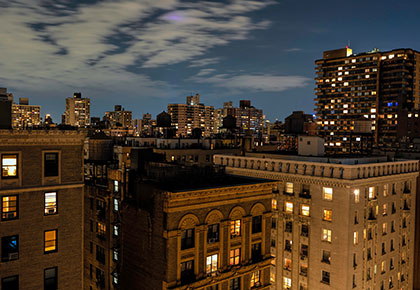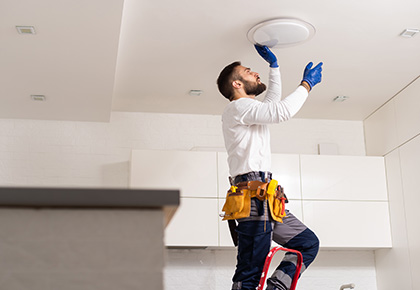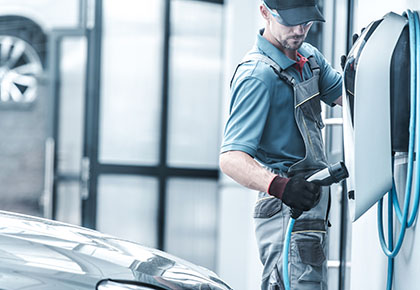-
Four Ways to Increase Value by Decreasing Energy Use
Of all the expenses you encounter as a homeowner, community or condo association, energy ranks toward the top of the list. Many of us see this as a given. We need lights. We need heating and cooling. We need to warm our water and prepare our food. And while the necessity of energy use will never change, how much we pay for it, and how much we need, can. -
HOA Law - Take Action with Your Legislature Now
More than 85% of officials in state legislatures are up for re-election this year. So what does that mean to you as a board member or resident in a condo or homeowners’ association (HOA)? And how does this affect HOA law? There are a variety of initiatives on the table across the nation that will significantly impact community associations. In this article, we’ll take a look at what those issues are – and most importantly, how you can impact HOA law. -
The Hottest Trends in High Rise Amenities for 2017
It’s important to make sure that your high-rise building’s amenities are desirable and reflect the latest needs and wants of current residents, as well as potential buyers. Investing in amenities will have a twofold effect: it will enrich the lifestyles of your homeowners and residents, and it will make your high-rise more marketable and enhance property values. Updating your amenities doesn’t have to cost a fortune. Read on for some of the hottest trends in high-rise amenities and suggestions for staying current with any budget. -

Enhancing energy benchmarking in condos and co-ops
Condominiums (condos) and cooperative housing communities (co-ops) are increasingly recognizing the importance of sustainability and energy efficiency in today's world. One vital tool that plays a crucial role in this effort is energy benchmarking. -
5 steps to create a lifestyle programs using community amenities
Now more than ever, communities are searching for ways to increase resident engagement and create a social atmosphere. One way managers capitalize on their available community amenities is through lifestyle programming. -
Summer energy conservation tips
Summer’s longer days mean more time to enjoy warm weather and sunshine, but they also mean higher energy bills. There is a bright side, however: by implementing an energy management program within your community, you can help keep costs down without sacrificing comfort. -
Incentives Aim to Green Up New York, Reduce Operating Costs for Building Owners
A recent study found that 75% of greenhouse gasses in New York City are generated by buildings, primarily multifamily residential buildings. As part of a city-wide effort to incentivize buildings to develop programs to curb emissions, FirstService Residential held its Third Annual Green Expo & Symposium on May 15 in New York. The event featured a panel of industry experts, including FirstService Residential President Dan Wurtzel, who described the benefits of participating in city programs, as well as the opportunities to save money, help the environment and enhance property values. -
Keeping HOA and Condo Common Areas Clean During the Coronavirus Pandemic
During these unprecedented times, residents are spending the majority of their time at home to prevent the spread of COVID-19 and protect themselves and their loved ones from infection. One of their primary contact points with the outside world is in your HOA or condo common areas, where they can be at risk of contact with lingering coronavirus or even spread existing virus to other areas of the property. Read on for a comprehensive list of places to clean and how to clean them. -
Lifestyle Expert Previews Amenity Trends for 2016 and Beyond
Location, location…amenities? As we told you in a previous article, the desirability of a community’s lifestyle amenities is becoming highly influential in driving the purchasing decision for many homebuyers. To rise to the challenge – and set themselves apart from the competition – many developers, builders and community associations are adding the next generation of amenities to their lifestyle communities, high-rises, condo buildings and other residential properties. And it’s working. By adding and/or updating their amenities to reflect evolving tastes, communities are effectively meeting the aspirations and demands – and enhancing the lifestyles – of potential and existing homeowners. -
Fall tips for homeowners: Preparing your HOA for fall
Whether your HOA is self-managed or professionally managed, getting started on your fall and winter prep will help keep your operations running smoothly as the seasons and temperatures change – and that will keep your residents happy as well. -
Managing community maintenance and improvement needs
Whether your community is self-managed or professionally managed, maintenance is a big part of the day-to-day responsibilities. It’s a responsibility that can quickly become overwhelming, especially when you walk in on a Monday morning to a list of what went wrong over the weekend. -
Managing Waste for a Greener Community
With a growing focus on proper environmental stewardship, many associations are working toward implementing green initiatives. But getting there can be daunting. With so many programs and opportunities available for all of us to reduce, re-use and recycle, it’s hard to know where to begin. -
Mold: How Should Your Association and Homeowners Handle It?
No one wants to find mold in their home or any association building. Unfortunately, mold is ubiquitous – it’s in the air and in the water, and when given the chance, it spreads like crazy. Learn steps to prevent mold or to have it assessed and properly treated, preserving your buildings and the health of your residents. -
Pros and Cons of Do It Yourself Repairs and Maintenance
FirstService Residential's Bill Worrall discusses the hidden costs of DIY maintenance and repairs and provides great insight into how boards can determine what can be done in house and what should be subbed out to appropriate contractors. -
Put an Energy Saving Program Together for a Multifamily Property
Many HOAs and community associations would like to save energy and energy spending, but they think that putting an energy management plan into place for their multifamily property is difficult to accomplish. FS Energy's Chris Normandeau explains some basic, easy-to-do steps that can make a real impact on an association's energy usage and budget. -
5 Steps to the Best Reserve Study Specialists
In our guide to capital improvements , reserve studies and their relationship to capital improvements and preventive maintenance were discussed at length. -
Seven Trends for Amenities in 2015
2014 was a year of change for a lot of associations. And in many ways, 2015 promises to be no different – especially when it comes to the types of amenities that will be offered by communities. -
Seven Ways to Fight Mold - And Win
It’s the scourge of households everywhere: the unsightly, unsanitary, unbecoming sight of mold. But waging war on mold means more than launching a full-scale assault when you see it (though that can be part of the battle plan). Instead, consider a comprehensive strategy – here are some tips to help you get started and steer clear of mold. -

5 strategies for energy conservation in community associations
In this article, we delve into the significance of energy conservation within community associations, exploring its benefits and strategies for effective implementation. -
Simple Energy Conservation Steps to Benefit Your Community This Winter
So what can condo boards or community associations do to mitigate or even reduce costs this winter? Let’s start with what you can do in the summer and fall, before winter actually begins. This includes cleaning, tuning and performing any necessary repairs to heating systems, furnaces and boilers to make sure they won’t be working longer, harder or less efficiently than they should. Other pre-winter tasks include cleaning gutters to remove leaves and debris to ensure water can flow freely. Otherwise, water can become trapped and freeze, which can not only damage your property’s gutters, but also cause ice dams and possible roof leaks. -
Six Steps to Putting a Park or Playground in Your Neighborhood
Enhance your community by putting more play in your community - learn more about how to put a park or playground in your neighborhood. -

Six steps to implement EV charging in high-rise condos
No longer the products of science fiction fantasy, electric cars are now a reality of everyday life. While the reduced emissions of personal electric vehicles, or PEVs, are good news for the environment, their charging requirements may create challenges for condo associations trying to navigate their infrastructure requirements, legal implications, management concerns and even aesthetic considerations. -
Six Things to Know About Fire Hydrants
Aside from knowing to not park next to one, how deep is your knowledge of fire hydrants? Unless you’re a firefighter, it’s probably not that extensive. This may not be a problem... until the unthinkable happens and you need to be confident that your fire hydrants are in good working order. But like any equipment in your community, fire hydrants need to be maintained. -
3 common residential drainage problems and their solutions
Unless you live in an area where it hardly ever rains (in which case you have a whole other set of problems), drainage will be an issue in your community. Proper drainage is, of course, the answer, but getting there means you have to meet stringent requirements throughout different areas of your community.